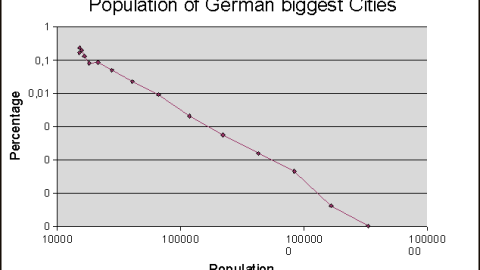Can There Be a Mathematics of War?

People do many things without knowing why: buy stuff they didn’t think they wanted, vote differently when they’re in one setting than they would in another, order a different lunch because of what the person next to them just ordered. As scientists learn more about all this, they should be able to predict, more often and more accurately, what people will do–regardless of what those people think they’ll do.
Those predictions will be a scientifically rigorous version of our usual methods for interpreting behavior: explaining people’s actions as the result of their feelings, perceptions and thoughts. When Josh Aronson and his colleagues showed they could get women to score better on a math test by telling them gender doesn’t affect math scores, they’re showing what psychologists can do with better knowledge of that familiar subject, the individual person. It’s impressive, but not eerie.
There are other methods of predicting people’s behavior, though, that aren’t intuitively easy to grasp. They’re based on patterns in the actions of very large numbers of people—stock markets, highway systems, cell-phone calls by the billions, and the like. That kind of prediction is harder to grasp, because it contradicts our intuitions about free will. How could my decision next Friday depend on what millions of other people do? The prospect is a little freaky.
Case in point: Today’s issue of Nature features a paper by Juan Camilo Bohorquez, Sean Gourley, Alexander R. Dixon, Michael Spagat and Neil F. Johnson, which argues that all insurgencies–wars in which guerrilla-type units are fighting a standing military–share a single, predictable pattern in their violent attacks. In other words, according to their model, the decisions of insurgents–about whether to attack on a Wednesday or a Saturday, about whether to try for an average success or go for a spectacularly bloody result–don’t take place in a wildly unpredictable “fog of war.” Instead, they’ll always tend to follow the same rhythm. Regardless of their beliefs, ideologies and motives. Regardless of their immediate tactical concerns. Regardless of what they may think they are doing.
Johnson, Spagat and their colleagues analyzed 54,679 violent events in nine separate insurgencies — Colombia, Peru, Senegal, Sierra Leone, Northern Ireland, Israel-Palestine, Iraq, Afghanistan and Indonesia — and plotted the frequency of insurgent attacks against the number of people killed in each one. They found the same relationship between the two in every conflict.
Let’s back up to see what that means. (If you prefer video, check out one of the authors describing the work here.) All over nature and in human affairs as well, that kind of a plot (size of a measurement against frequency of occurrence) often reveals a relationship between the two. For human height, for example, the most typical measurements are the most frequent (a lot more human beings measure five foot ten than reach eight feet), so height measurements fall on the familiar “bell curve”: small at the extremes, fat in the middle.
The bell curve teaches you to expect that what’s typical is frequent, which makes extreme and rare events look unpredictable. But the bell curve isn’t the only possible relationship between size and frequency. For any given earthquake zone, for example, there will be a hundred quakes that score 2.0 in the Richter scale for every 4.0 quake. The Richter scale is logarithmic–3 is ten times stronger than 2, and 4 is ten times stronger than 3–so this relationship between strength and frequency isn’t anything like a bell-curve plot. It’s looks more like Chris Anderson’s “long tail,” where a few rare giants reach the top of the graph and most of the measurements trail after.
Because of the way they’re represented mathematically, these kinds of relationship between size and frequency are called “power law” distributions. And such distributions are extremely common. Power-law plots fit, for example, the relationship between a meteorite’s kinetic energy and the size of the crater it creates on the moon; sales of books, the frequency of different openings in chess games, the participation of editors on Wikipedia, and the frequency of words in any given language.
Power-law graphs are significant, first, because they give a different perspective on extreme events. Bell-curve expectations make those rarities–the mega-best-selling book, the magnitude 7 earthquake, the terrorist strike that kills 3,000 people–appear impossible to predict. On a power-law distribution, rarity doesn’t mean “unforeseeable.” Secondly, power-law patterns suggest that physical facts might govern behavior that looks to us as if it must be caused by psychological, economic or historical factors.
The rap against this approach is that it’s just numerology. Not every pattern in data describes real-world causes and effects, after all. For instance, from 1860 until 1980, every President elected in a year ending with “0” died in office. It seems unlikely that this numerical coincidence could tell anything about physical or social reality.
The Nature authors have an answer to that. If there is a common signature to all insurgencies, they argue, it must because all insurgent fighters converge on the only viable strategy. (The pattern they found in insurgent attacks does not apply to non-insurgent conflicts, they write.) The authors believe guerrilla movements are bound by a mix of physical and social constraints. Physically, insurgent groups maintain a particular size and organization to persist; socially, they have to strike in such a way that they get the maximum media attention and political impact. A terrorist group doesn’t want to strike on a day when three other units also attack, because then their assault will be lost in the general coverage. In other words, guerrillas, like stock brokers, are making decisions based on what they think other people will do.
So, does this mean power-law analysis can predict future terrorist attacks? Not to a very fine grain–though one of the pioneers of this analysis, Aaron Clauset, has said the power-law pattern of global terrorist attacks suggests a strike on the scale of 9/11 will occur before the end of 2012. The Nature authors say they’re more interested in using the model to understand insurgencies. In an email, Johnson and Spagat wrote: “We are now looking at where events occur, and when, to see if we can understand the spreading. We are also looking at intervention strategies etc. Also we are addressing ‘what if’ questions such as: What would happen if we added a third population of ‘peacekeepers’? How should they be deployed in order to minimize casualties?”





